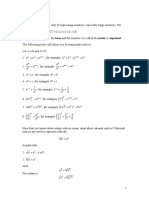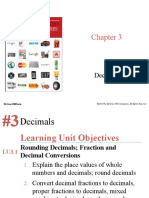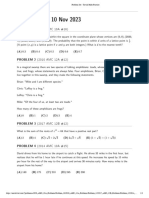0% found this document useful (0 votes)
12 views28 pagesLecture 3 Nonlinear Equations
The document covers quadratic functions and equations, explaining their standard form and providing examples of how to solve them. It also discusses indices and logarithms, detailing rules for manipulating exponential expressions and logarithmic calculations. Key concepts include the quadratic formula, rules of indices, and logarithm properties with examples for clarity.
Uploaded by
Ank KeyCopyright
© © All Rights Reserved
We take content rights seriously. If you suspect this is your content, claim it here.
Available Formats
Download as PDF, TXT or read online on Scribd
0% found this document useful (0 votes)
12 views28 pagesLecture 3 Nonlinear Equations
The document covers quadratic functions and equations, explaining their standard form and providing examples of how to solve them. It also discusses indices and logarithms, detailing rules for manipulating exponential expressions and logarithmic calculations. Key concepts include the quadratic formula, rules of indices, and logarithm properties with examples for clarity.
Uploaded by
Ank KeyCopyright
© © All Rights Reserved
We take content rights seriously. If you suspect this is your content, claim it here.
Available Formats
Download as PDF, TXT or read online on Scribd
/ 28





















































































